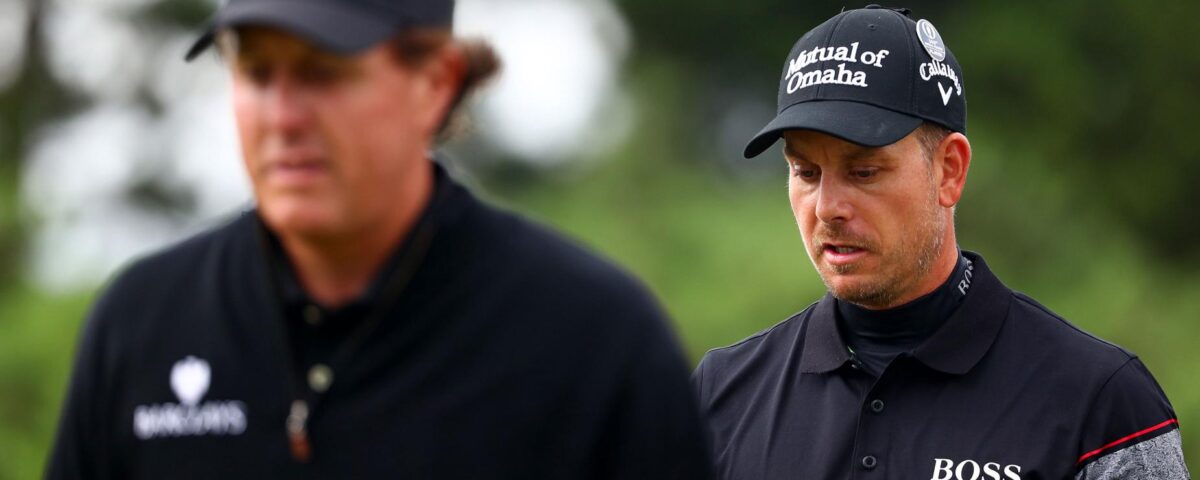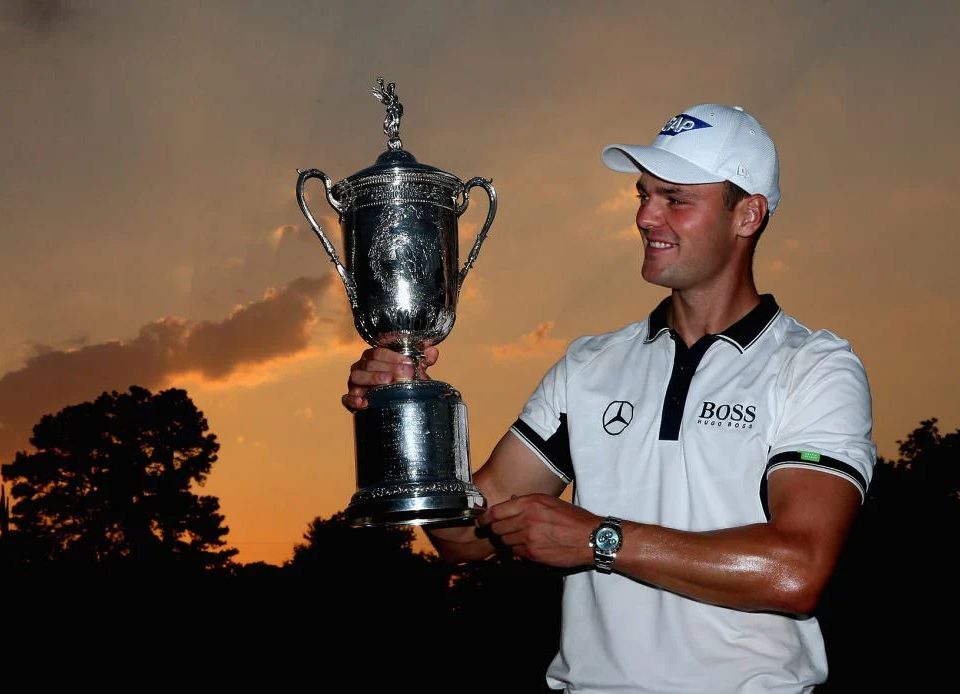
WILL PINEHURST WITNESS ANOTHER ROUT LIKE 2014?
June 12, 2024
One of the Greatest Open Golf days and one of the most dramatic Championships ever!
The 2016 Open Championship at Royal Troon will forever be etched in golfing lore as one of the most thrilling major tournaments in recent history. From July 14-17, the world’s best golfers descended upon the challenging links of Royal Troon Golf Club in Ayrshire, Scotland, for the 145th edition of golf’s oldest major. What unfolded over four days was a captivating duel between two of the game’s most respected players, culminating in a record-breaking performance that left spectators and commentators alike in awe.
The tournament saw Henrik Stenson of Sweden claim his first major title in spectacular fashion, outlasting Phil Mickelson in a head-to-head battle that drew comparisons to the famous “Duel in the Sun” between Tom Watson and Jack Nicklaus at Turnberry in 1977. With stunning displays of skill, nerve, and determination, Stenson and Mickelson distanced themselves from the field, turning the final round into a two-man showdown that will be remembered for generations to come.
When we talk about unforgettable moments in golf, the 2016 Open Championship at Royal Troon immediately springs to mind. From July 14-17, the golfing world was treated to a spectacle that will be remembered for generations. This wasn’t just another major tournament; it was a showcase of skill, determination, and sportsmanship that captured the imagination of golf fans worldwide.
Let’s dive into what made this championship so special, from the course itself to the nail-biting finish that had us all on the edge of our seats.
Setting the Stage: Royal Troon
Before we get into the drama of the tournament, let’s talk about the battlefield: Royal Troon Golf Club. This isn’t just any golf course; it’s a links course with a rich history dating back to 1878. The 2016 Open marked the ninth time Royal Troon had hosted this prestigious event, and it didn’t disappoint.
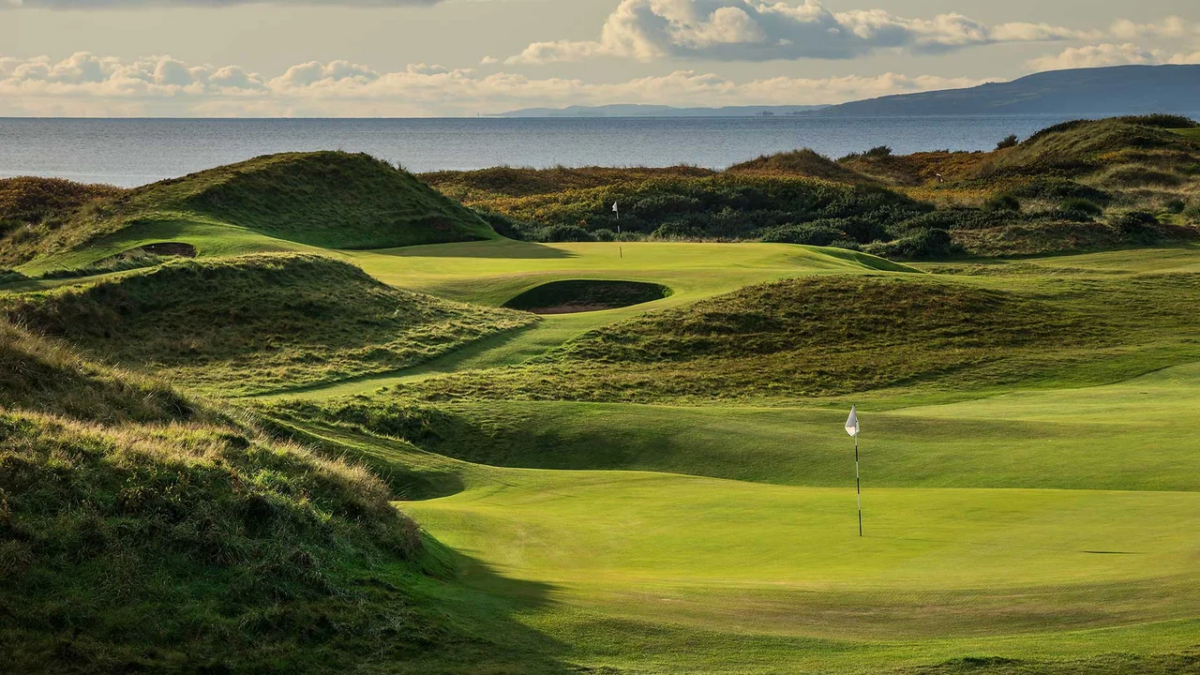

What makes Troon unique? For starters, it’s a tale of two nines. The front nine typically plays downwind, offering scoring opportunities for those brave enough to take them. But don’t get too comfortable, because the back nine is a different beast altogether. Playing into the prevailing wind, it’s a stern test that has humbled even the greatest players.
Some holes at Royal Troon have achieved legendary status:
- The Postage Stamp (8th hole): Don’t let its tiny 123-yard length fool you. This par-3 is proof that good things come in small packages – if by “good” you mean a green surrounded by deep bunkers that can turn a round sour in a heartbeat.
- Railway (11th hole): At 482 yards, this par-4 is bordered by the actual Glasgow-to-Ayr railway line. It’s considered one of the toughest holes in championship golf, and for good reason. One errant shot, and your ball might be catching the next train out of town.
- Alton (18th hole): The 458-yard closing hole features a narrow fairway and a well-bunkered green. It’s a fitting finale that has seen its share of drama over the years.


The unpredictable Scottish weather adds another layer of challenge, making Royal Troon a true test of golf that demands both power and precision.
Pre-Tournament Buzz
As the golfing world descended on Ayrshire, there was no shortage of compelling storylines. Jason Day came in as the world No. 1, fresh off his first major win at the 2015 PGA Championship. Dustin Johnson was riding high after finally breaking through for his first major at the 2016 U.S. Open. Rory McIlroy, always a threat on links courses, was eager to add to his major tally.
Then there was Jordan Spieth, the young American phenom who was just 12 months away from winning his open and Zach Johnson looking to defend his Open title from the previous year at St. Andrews. And let’s not forget Phil Mickelson, a five-time major champion and the 2013 Open winner. Despite being considered a dark horse by some, Mickelson’s experience and affinity for links golf made him a player to watch.
Henrik Stenson, despite his status as one of the world’s top players, wasn’t on everyone’s radar as a favorite. But those who had been paying attention knew his consistent play and previous close calls in majors made him a serious contender.
The Stage is Set
As the tournament began, anticipation was high. Would we see a breakthrough performance from a rising star? Would one of the established champions add another major to their resume? Or would we witness something truly extraordinary?
Little did we know, we were about to experience one of the greatest Opens in history.
Round 1: Mickelson Makes His Mark
The opening round saw Phil Mickelson roll back the years with a spectacular 8-under-par 63. This wasn’t just a good round; it tied the record for the lowest round in a major championship. Mickelson’s mastery of the course was evident as he carded 10 birdies against just two bogeys.
The golfing world held its collective breath as Mickelson stood over a birdie putt on the 18th that would have given him the outright record. The ball looked perfect all the way, only to cruelly lip out at the last moment. Still, Mickelson’s 63 set the tone for what would be an extraordinary tournament.
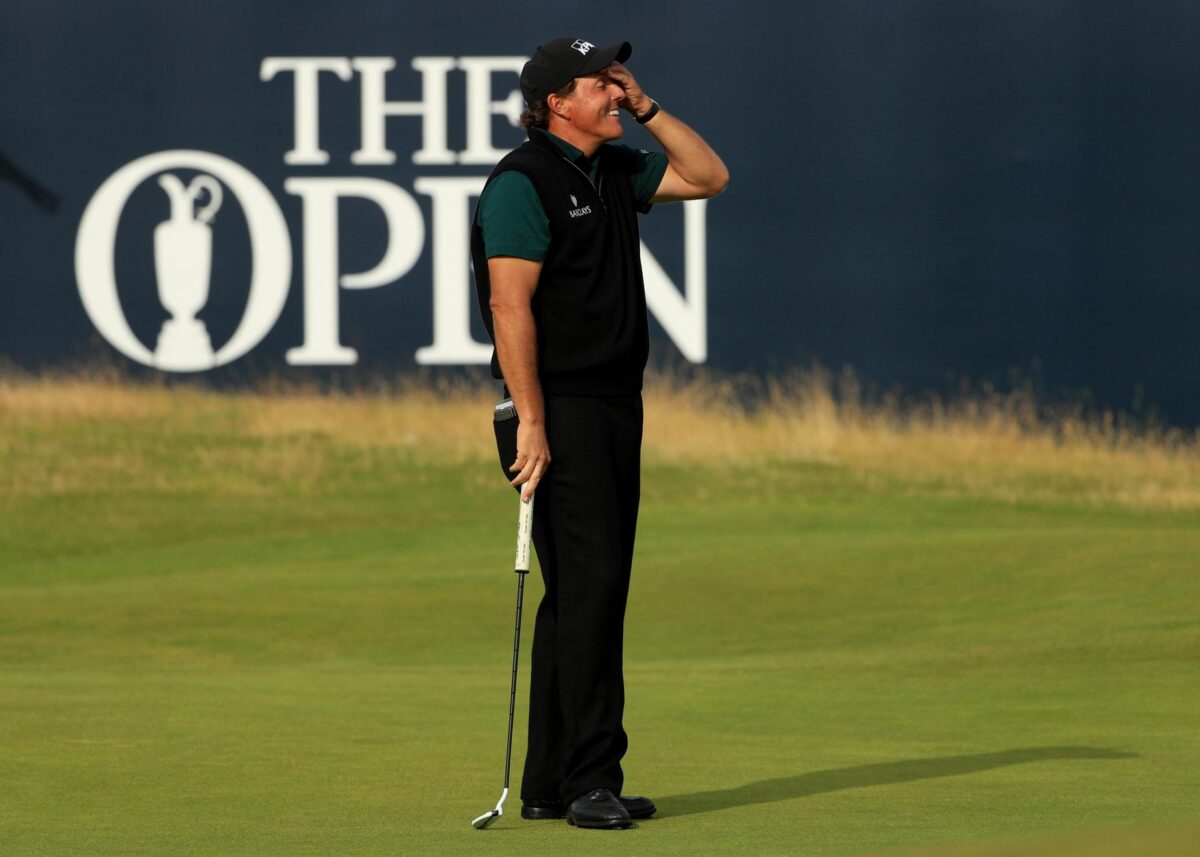
Behind Mickelson, Patrick Reed and Martin Kaymer posted impressive 66s, while Henrik Stenson quietly went about his business with a solid 68. Pre-tournament favorite Dustin Johnson struggled to a 71, a reminder of how quickly fortunes can change in this unpredictable game.
Round 2: Stenson Makes His Move

The second round saw Mickelson maintain his lead, but only just. His 2-under 69 was solid, but it was Henrik Stenson who stole the show with a scintillating 65. Suddenly, the Swede was just one shot off the lead, and a fascinating weekend was in prospect.
Soren Kjeldsen and Keegan Bradley also made significant moves up the leaderboard, proving that there was scoring to be had if you could solve the Troon puzzle.
As is often the case in major championships, the cut claimed some big names. Masters champion Danny Willett and former Open champions Ernie Els and Louis Oosthuizen all found themselves with unexpected free time on their hands for the weekend mainly due to the weather.
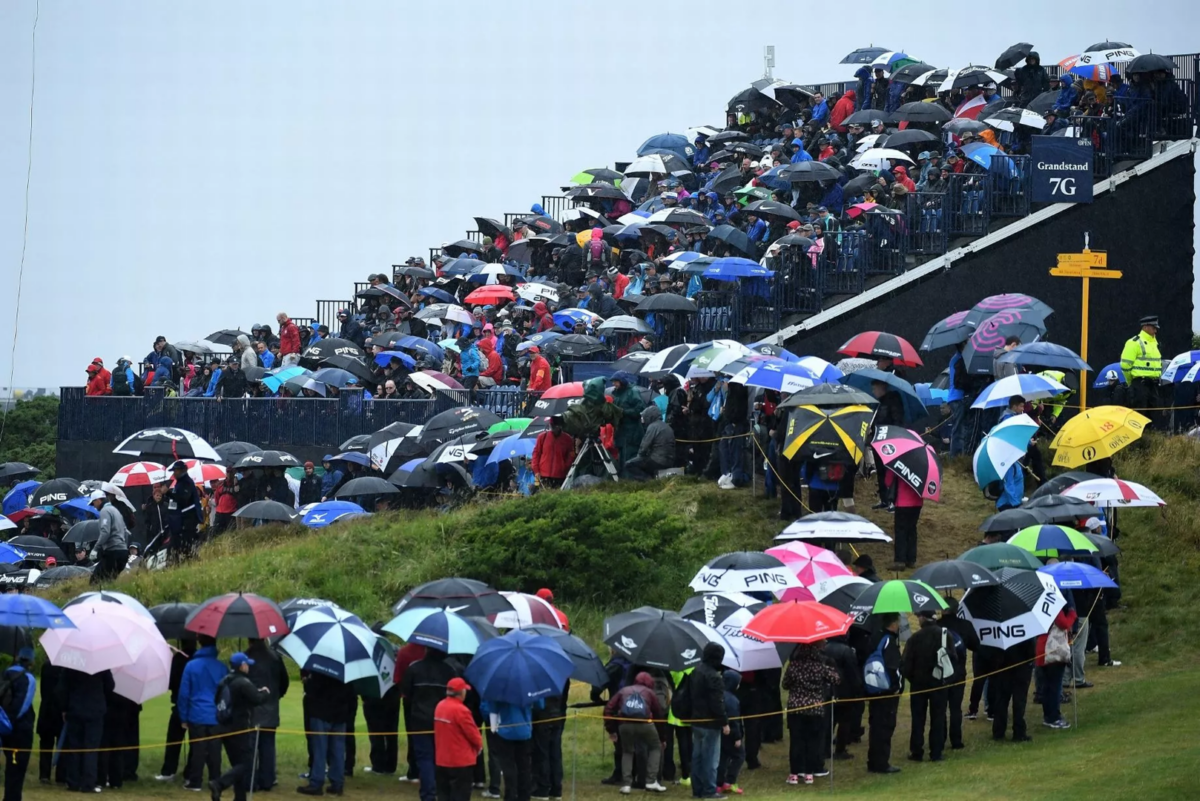
Round 3: The Battle Lines are Drawn
Moving Day lived up to its name, but primarily for two players. Henrik Stenson overtook Mickelson with a superb 68, while Lefty could only manage a 70. This set the stage for what would become one of the greatest final-round duels in golfing history.

Behind the leading pair, Bill Haas made a significant move with a 69, but found himself a distant six shots behind Stenson. The affable Andrew “Beef” Johnston became a crowd favorite, his jovial demeanor and solid play earning him solo fourth after three rounds. As Saturday drew to a close, it was clear that barring something extraordinary, the Claret Jug would be heading home with either Stenson or Mickelson. The stage was set for a Sunday showdown.

Round 4: A Duel for the Ages
The final round of the 2016 Open Championship will go down in history as one of the greatest duels ever witnessed in major championship golf. Stenson began the day with a one-shot lead over Mickelson, but what unfolded over the next 18 holes was nothing short of spectacular.
From the outset, it was clear this was going to be special. Stenson bogeyed the first hole, temporarily relinquishing his lead to Mickelson. But the Swede’s response was emphatic: birdies at the 2nd, 3rd, and 4th holes. Mickelson, not to be outdone, birdied the 2nd and 4th himself.
The back-and-forth continued throughout the front nine, with neither player able to land a decisive blow. The galleries swelled, sensing they were witnessing something extraordinary. The rest of the field was relegated to the role of spectators, as Stenson and Mickelson put on a display of golf that was almost superhuman in its quality.
The turning point came on the par-4 14th hole. Stenson, in a moment of pure golfing magic, drained a 51-foot putt for birdie. The roar from the crowd was deafening. This two-shot swing gave Stenson a lead he would not relinquish.
But Mickelson wasn’t done. He kept the pressure on, matching Stenson shot for shot. His own play was nearly flawless – a bogey-free 65 that on any other day would have been more than enough to secure victory.
Stenson, however, was playing golf from another planet. He made another long birdie putt on the 15th and then, in a fitting finale to his round, birdied the 18th hole. His final-round 63 tied the record for the lowest final round in a major championship.
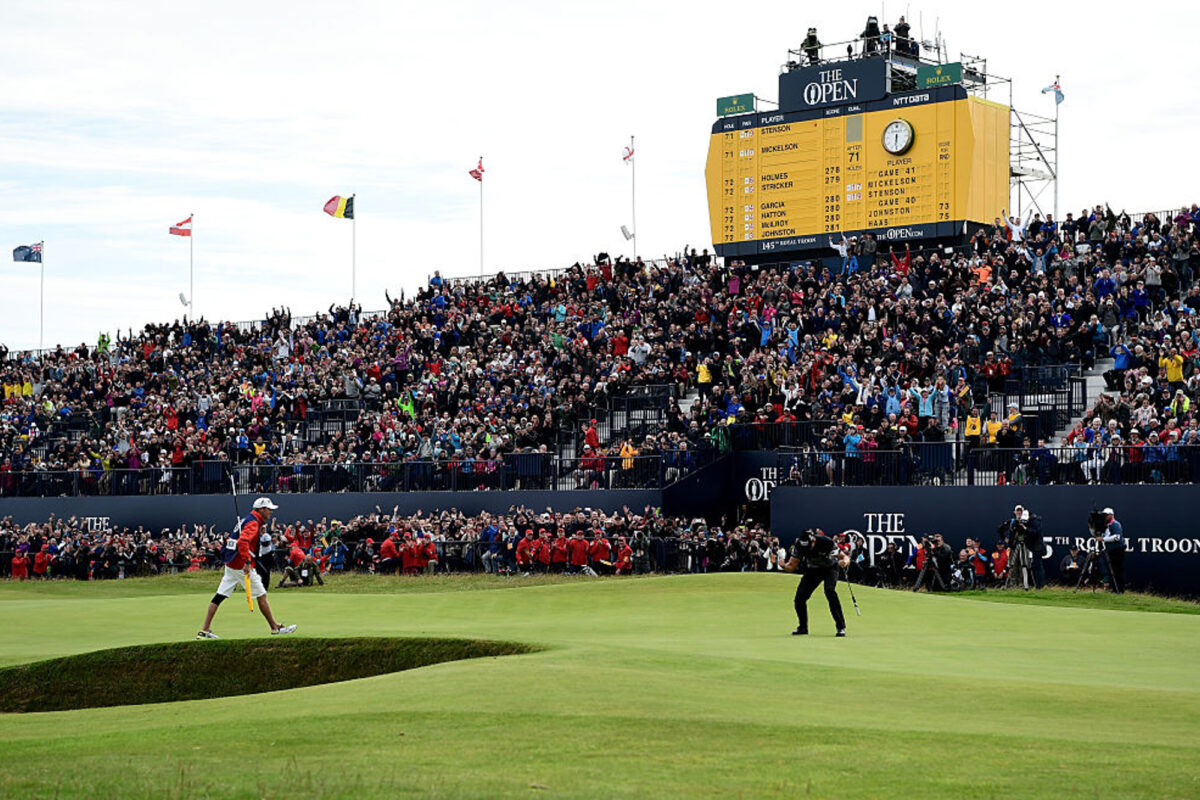
The final scores tell the story of a duel that will be talked about for generations:
Henrik Stenson: -20 (264) Phil Mickelson: -17 (267) J.B. Holmes: -6 (278)

Stenson’s total of 264 broke the record for the lowest aggregate score in a major championship. Mickelson’s 267 would have won or forced a playoff in all but four of the previous 145 Opens. The 11-shot gap between second and third place underscored just how far ahead of the field these two greats were playing.
The final round deserves a more detailed examination, as it truly was a masterclass in golf at the highest level. Let’s break down some key moments that defined this historic duel:
- The Early Exchange: Stenson’s bogey on the first hole could have set a negative tone for his round. However, his response – three consecutive birdies – showed the mental fortitude that would carry him through the day. Mickelson’s ability to match Stenson’s birdies on the 2nd and 4th holes demonstrated that he wasn’t going to let the Swede run away with the tournament.
- The Front Nine Battle: As they made the turn, both players were putting on a show. Stenson’s four birdies were matched by Mickelson’s three, with neither player carding a bogey after the first hole. The quality of golf was astounding, with both players hitting fairways and greens with unerring accuracy.
- The Back Nine Surge: The 10th hole saw both players make birdie, but it was the par-3 11th where Stenson gained an edge with another birdie. Mickelson, ever the fighter, responded with a birdie on the 12th to keep pace.
- The Defining Moment: The 14th hole, where Stenson sank that incredible 51-foot putt, wasn’t just about the two-shot swing. It was a psychological blow, a statement of intent from Stenson that said, “This is my time.” The roar from the crowd was deafening, and you could almost feel the momentum shift decisively in Stenson’s favor.
- The Closing Stretch: Even with Stenson pulling ahead, Mickelson refused to yield. His birdie on the 16th kept the pressure on. But Stenson’s response was emphatic – another birdie on the 17th, followed by that final birdie on the 18th to put an exclamation point on his victory.

Throughout the round, both players showcased every shot in their arsenal. Stenson’s long iron play was particularly impressive, repeatedly setting up birdie opportunities. Mickelson, known for his short game wizardry, pulled off several impressive up-and-downs to keep the pressure on.
The Mental Game
What made this duel particularly special was the mental strength displayed by both players. Golf is as much a mental game as it is physical, and nowhere was this more evident than in the final round at Troon.
Stenson, who had come close in majors before but never sealed the deal, showed remarkable composure. He didn’t let the early bogey rattle him, nor did he get ahead of himself when he took the lead. His focus remained unwavering, his routine consistent, as he methodically plotted his way around the course.
Mickelson, for his part, displayed the fighting spirit that has defined his career. Even as Stenson pulled ahead, Mickelson never stopped believing he could win. His body language remained positive, his demeanor calm, as he pushed his younger opponent to the very limits of excellence.

The Aftermath
In the immediate aftermath of the tournament, the golfing world was abuzz with what they had just witnessed. Players, past and present, took to social media to express their awe at the level of golf they had just seen.
Jack Nicklaus, whose record Mickelson had tied with his opening round 63, called it “one of the greatest rounds I have ever seen.” High praise indeed from the man many consider the greatest golfer of all time.
Rory McIlroy, who had played alongside Stenson earlier in the tournament, said, “I don’t think I’ve ever seen golf played at that level.”
The impact of this duel went beyond just the players involved. It reinvigorated interest in The Open Championship, reminding people of the unique challenge and drama that links golf can provide. TV ratings for the final round were the highest for an Open in years, as viewers tuned in to watch history unfold.
Legacy and Impact on the Players
For Henrik Stenson, this victory was the culmination of a long journey. Having turned professional in 1998, he had experienced both the highs and lows of professional golf. He had been as high as number two in the world rankings, but had also fallen outside the top 200 at one point. This win not only secured his place in golf history but also validated the hard work and perseverance he had shown throughout his career.

In the years following his Open triumph, Stenson’s career continued to flourish. While he didn’t add to his major tally, he remained a force on both the European and PGA Tours. His win also opened doors for other Swedish golfers, inspiring a new generation of players from his home country.
For Phil Mickelson, the 2016 Open was a bittersweet experience. On one hand, he had played some of the best golf of his career, breaking the Open Championship scoring record for players who didn’t win. On the other hand, it was another near-miss in a career that has seen its fair share of runner-up finishes in majors.
However, true to his nature, Mickelson took the positives from the experience. In interviews after the tournament, he expressed pride in his performance and admiration for Stenson’s play. This resilience would serve him well, as three years later, at the age of 50, Mickelson would go on to win the 2021 PGA Championship, becoming the oldest major champion in golf history.
The Course: Royal Troon’s Place in Open History
The 2016 Open further cemented Royal Troon’s place in the pantheon of great Open venues. The course provided the perfect stage for the drama that unfolded, with its mix of scoreable holes and stern challenges allowing for both aggressive play and strategic decision-making.
The famous “Postage Stamp” 8th hole lived up to its reputation, providing both birdies and bogeys in equal measure. The difficult closing stretch, particularly the fearsome 11th hole (aptly named “The Railway”), ensured that no lead was safe until the final putt dropped.

The R&A, golf’s governing body outside of North America, praised the course setup and the way it allowed for such dramatic play. It’s likely that this memorable championship will factor into future decisions about Open venues, potentially leading to a quicker return to Troon than the usual rotation might suggest.
Inspiration for Amateurs
One of the beautiful aspects of golf is how performances like those seen at the 2016 Open can inspire amateur players around the world. While the level of play exhibited by Stenson and Mickelson may seem unattainable for the average golfer, there are still valuable lessons to be learned:
- The importance of a solid routine: Both players stuck to their pre-shot routines throughout the pressure-packed final round, demonstrating the value of consistency in approach.
- Mental resilience: The way both players bounced back from setbacks (Stenson’s opening bogey, Mickelson falling behind) shows the importance of staying positive and focused, regardless of the situation.
- Course management: Despite the low scores, both players showed great respect for the course, picking their moments to attack and when to play more conservatively.
- The value of practice: The level of shotmaking on display was a testament to the countless hours both players had spent honing their skills on the practice range.
- Sportsmanship: The mutual respect shown by Stenson and Mickelson throughout their battle, and particularly after the tournament, is something all golfers can aspire to.

Conclusion: A Tournament for the Ages
As we reflect on the 2016 Open Championship at Royal Troon, it’s clear that we witnessed something truly special. It was more than just a golf tournament; it was a showcase of everything that makes this sport great. The skill, the drama, the sportsmanship – all were on display in abundance over those four days in Scotland.
Henrik Stenson’s victory, secured through a record-breaking performance, represented the culmination of a career-long quest for major championship glory. His duel with Phil Mickelson reminded us of golf’s unique ability to produce head-to-head contests of the highest quality.
For Mickelson, while the sting of defeat was surely acute, his performance further cemented his status as one of the greatest players of his generation. His graciousness in defeat was a lesson in sportsmanship for golfers of all levels.
The 2016 Open also showcased why links golf holds such a special place in the sport. The unique challenges presented by courses like Royal Troon, combined with the unpredictable Scottish weather, create a stage upon which drama unfolds at every turn.
As we look back on this tournament, we’re reminded of why we love this game. It’s not just about the winners and losers, the scores and the statistics. It’s about those moments of individual brilliance, the intense competition, and the unparalleled drama that only golf can produce.
The 2016 Open at Royal Troon will always hold a special place in golfing history – a testament to the skill, determination, and sportsmanship of its leading protagonists, and a reminder of just how thrilling this ancient game can be.
For golf fans around the world, it was a privilege to witness such an extraordinary event. And for those of us who love to discuss and debate the great moments in golf history, the 2016 Open at Royal Troon has given us material that will last a lifetime.
As we continue to watch major championships unfold year after year, we’ll always have this tournament as a benchmark for excellence. It set a new standard for what is possible in the game of golf, inspiring players and fans alike. The 2016 Open at Royal Troon wasn’t just a great golf tournament – it was a moment that transcended the sport, reminding us all of the power of human achievement and the enduring appeal of athletic competition at its very best.











